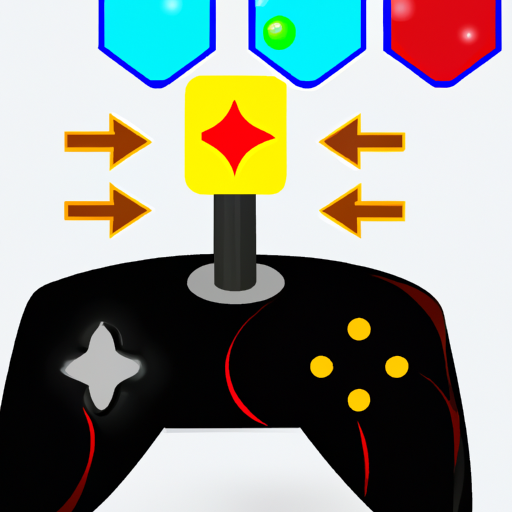Computer games often require large amounts of RAM (Random Access Memory) to run efficiently. Without sufficient RAM, the game may experience stuttering or freezing, resulting in a poor user experience. It is therefore important to know how to assign more RAM to a game if it requires more than what is available on the system. This article will provide guidance on how to determine the amount of RAM needed for a game, check system specifications, change virtual memory settings, assign more RAM to said game and monitor system performance.
Determine the Amount of RAM You Need
Determining the quantity of memory required for optimal performance is an essential step in optimizing a computing experience. Researching what type and how much RAM is best for the desired game should be the first step in this process. It is important to check system requirements which will provide information about minimum and recommended hardware specifications including RAM. This can help determine if it is necessary to upgrade existing components or purchase new hardware upgrades.
Understanding what type of RAM is supported by a computer’s motherboard may also be important when selecting an appropriate upgrade. The physical size and speed of memory modules, as well as its compatibility with the motherboard, are all factors that need to be taken into consideration before deciding if additional RAM is needed or not. Installing more than what the manufacturer recommends can lead to problems with incompatibility and overheating, which could cause serious damage to both the hardware and software running on it.
Once it has been established that more RAM needs to be added, then it should be installed following instructions provided by the manufacturer or a qualified technician familiar with these types of hardware upgrades. Installing too much or incompatible memory modules could result in significant performance issues such as random freezing or crashing while playing games, so it’s important that all steps are followed correctly during installation. Taking time upfront to research how much RAM is required for optimal game performance can save time and money down the line from having to replace any damaged components due incorrect installation processes.
Check Your System Specifications
Examining the system specifications is an essential step in optimizing performance for a digital experience. Knowing the exact hardware components of the system, such as the processor type, installed RAM, and graphics card, can help determine if it meets or exceeds the recommended requirements for a game or other application. Additionally, updating drivers and other software utilities related to system optimization should be done prior to increasing RAM allocation.
The user should begin by finding out what their current operating system is running on their device. This can be done by going into the settings menu of their OS and looking at what version it currently is. From there they will need to check what kind of processor they have installed in their machine along with any other hardware components that may limit how much RAM they are able to allocate.
Once all relevant information has been gathered about their device’s hardware configuration then any necessary updates should be made before attempting to assign more RAM to a game or application. These updates may include updating drivers for certain components or using third-party applications which specialize in providing more control over system resources like memory allocation. After these steps have been taken then users can start looking into ways of increasing RAM dedicated towards a particular game or program depending on its requirements and capabilities with respect to available resources.
Change Your Virtual Memory Settings
The process of changing the virtual memory settings involves two main steps: adjusting the page file size and changing the virtual memory settings. Adjusting the page file size requires that users consider their physical RAM and determine what additional storage will be needed for virtual memory. Changing the virtual memory settings requires that users select an appropriate initial size, maximum size, and drive in which to store it.
Change the Page File Size
Adjusting the page file size is an essential step to optimize system performance for running applications. The Windows operating system uses a page file, also referred to as Virtual Memory, which provides additional memory space when the RAM capacity of the computer is exceeded. By increasing the page file size, it allows more room in the RAM to run programs and games with higher demands on resources. Increasing this size may not always be necessary, but it can help those who are dealing with insufficient RAM when trying to run high-performance games or applications. Additionally, discussing benefits of hardware upgrades may be necessary if there is not enough space available in the page file even after adjustments have been made.
Change the Virtual Memory Settings
By changing the virtual memory settings, users can optimize system performance for running applications and increase the amount of available RAM to run high-performance programs. Virtual Memory is a feature of an operating system (OS) that uses a portion of the hard drive as if it were RAM. This feature enables the OS to manage memory more efficiently by writing inactive data from RAM onto the hard drive and then swapping them back in when they are needed again. By managing memory in this way, users can ensure that their systems have enough space to allocate additional resources for running games or other intensive applications.
When setting up virtual memory, users need to define parameters such as initial size and maximum size of paging files. The initial size should be 1.5 times larger than installed physical RAM for optimal performance, while the maximum size should not exceed 4GB. It is also important to note that modifying these settings may affect overall system performance, so it is recommended that users keep a backup copy before making any major changes. Additionally, some games may require specific virtual memory settings in order for them to run properly on certain systems due to compatibility issues.
Assign More RAM to the Game
Increasing the amount of memory allocated to a particular software application can enhance its performance. In order to assign more RAM to a game, users may need to optimize their computer’s settings and/or upgrade their hardware components. Depending on the system’s current specifications, it might be possible for users to increase the amount of RAM allocated directly from within the game itself.
If this option is not available, users may have to adjust their operating system’s virtual memory settings in order to assign more RAM to the game. This process will involve changing both the minimum and maximum values in the ‘Virtual Memory’ window, as well as allocating an appropriate amount of hard disk space for virtual memory usage. These values should then be saved before restarting the computer so that they can take effect.
In addition, if users want further improvements in performance they may need to consider upgrading their existing hardware components or installing additional ones such as extra RAM modules or graphics cards. This could significantly improve overall performance levels and provide a smoother gaming experience with less lag and stuttering issues.
Monitor Your System Performance
System performance monitoring is an effective way to ensure that hardware and software components are running efficiently. Monitoring system performance can be done in order to optimize settings and maximize the performance of a particular game, as well as other applications installed on the computer. This involves tracking various aspects of the system such as CPU usage, RAM usage, disk space and temperature. By doing so, it is possible to determine if there is enough RAM available for a specific game or application to run smoothly.
It is also important to monitor memory consumption when assigning more RAM to a game. Memory consumption can be monitored by using task manager tools or specialized utilities like Process Explorer or Resource Monitor. These tools provide useful information about how much memory each process uses and can help identify any potential bottlenecks that may be preventing games from running properly. Additionally, monitoring memory usage allows users to adjust their settings accordingly for optimal gaming experience.
Performance monitoring helps users identify any underlying issues with their system and make any necessary adjustments in order to get maximum performance out of their games or applications. By regularly checking up on how much RAM is being used by different processes, users can determine if they need additional resources in order to ensure smooth gameplay without compromising system stability or speed.
Frequently Asked Questions
How do I know if my system can handle more RAM?
The amount of Random Access Memory (RAM) a gaming system can handle is determined by the hardware limitations, as well as its intended purpose. For example, if the system is designed for casual gaming, it might have lower RAM allotment than a system designed for competitive or professional gaming. The gameplay impact of additional RAM will depend on the type of game and how much memory it requires during operation. Generally speaking, games that require more intensive calculations or higher graphical fidelity will benefit from an increased amount of RAM available to them.
What is the best way to optimize my system for game performance?
Optimizing a system for gaming performance ultimately involves making adjustments to the hardware and graphics settings. Upgrading the hardware of a computer is one method of improving gaming performance, as more advanced components can improve frame-rates and reduce graphical lag. Additionally, adjusting graphics settings to ones that are slightly below maximum can also help to enhance game performance by reducing strain on the computer’s resources. By tailoring these aspects to best suit the user’s preferences and needs, an optimized experience should be achievable.
Are there any benefits to assigning more RAM to a game?
Assigning more RAM to a game can have several benefits, such as higher frames per second (FPS), better visuals, improved texture quality, and increased stability. Typically, the amount of RAM used for gaming is determined by the system’s graphics card and processor. Increasing RAM can help manage large files more efficiently and reduce lag time during gameplay. This may result in smoother game performance and fewer crashes or freezes due to inadequate resources being allocated. Assigning additional RAM to a game can also reduce stuttering or choppy video which can be caused by limited memory resources. Ultimately, assigning more RAM to a game can help improve its overall performance.
Can I reduce the amount of RAM assigned to a game?
Reducing the amount of RAM allocated to a game can be beneficial in certain situations. Memory allocation has an impact on the loading time and performance of a game, as each program running uses up system resources. When too much RAM is allocated to a game, it can cause issues with other programs or processes that are running in the background; reducing the assigned memory for a game will free up more resources for other tasks. It is important to note that allocating too little RAM to a game can have adverse effects on its performance, such as longer load times or decreased frame rates. Therefore, it is essential to allocate an appropriate amount of memory for optimal loading and gameplay experience.
What are the implications of assigning more RAM to a game?
Increasing the amount of RAM assigned to a game can have both positive and negative implications. On the plus side, graphics quality may be improved, as more memory allows for higher resolution textures and better lighting effects. Additionally, load times can be decreased due to faster access of data from the RAM compared to storage media such as a hard drive or SSD. However, it is important to consider that assigning too much memory may cause performance issues in some cases, since games need time to process large quantities of data stored in RAM. Furthermore, assigning too much memory can lead to an increase in energy consumption by the computer system.
Conclusion
It is important to be mindful of the amount of RAM needed when assigning more RAM to a game. Knowing one’s system specifications is essential in making any changes to the virtual memory settings. Once these steps are taken, it is possible to assign more RAM to the game and monitor system performance accordingly. To ensure optimal gaming experience, it is recommended that users assess their systems before making any adjustments or upgrades. By following these steps, users can be sure they have allocated enough RAM for their gaming needs while also avoiding potential issues related to insufficient memory allocations.











